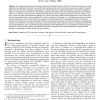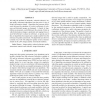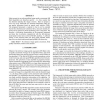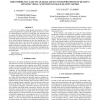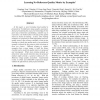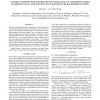148
Voted
CVPR
2012
IEEE
13 years 3 months ago
2012
IEEE
In this paper, we present an efficient general-purpose objective no-reference (NR) image quality assessment (IQA) framework based on unsupervised feature learning. The goal is to...
128
click to vote
PAMI
2012
13 years 3 months ago
2012
—The widespread deployment of Automated Fingerprint Identification Systems (AFIS) in law enforcement and border control applications has heightened the need for ensuring that the...
102
Voted
ICASSP
2011
IEEE
14 years 4 months ago
2011
IEEE
We study the problem of automatic “reduced reference” image quality assessment algorithms from the point of view of image information change. Algorithms that measure differenc...
110
Voted
ICIP
2010
IEEE
14 years 10 months ago
2010
IEEE
Most present day no-reference/blind image quality assessment (NR IQA) algorithms are distortion specific - i.e., they assume that the distortion affecting the image is known. Here...
99
Voted
ICIP
2007
IEEE
15 years 4 months ago
2007
IEEE
The aim of an objective image quality assessment is to find an automatic algorithm that evaluates the quality of pictures or video as a human observer would do. To reach this goal...
110
Voted
MMM
2005
Springer
15 years 6 months ago
2005
Springer
In this paper, a novel learning based method is proposed for No-Reference image quality assessment. Instead of examining the exact prior knowledge for the given type of distortion...
116
Voted
ICIP
2008
IEEE
16 years 2 months ago
2008
IEEE
Computational representation of perceived image quality is a fundamental problem in computer vision and image processing, which has assumed increased importance with the growing r...
123
click to vote
ICIP
2008
IEEE
16 years 2 months ago
2008
IEEE
Divisive normalization has been recognized as a successful approach to model the perceptual sensitivity of biological vision. It also provides a useful image representation that i...
146
click to vote
Source Code
The Structural SIMilarity (SSIM) index is a novel method for measuring the similarity between two images. The SSIM index can be viewed as a quality measure of one of the images bei...

